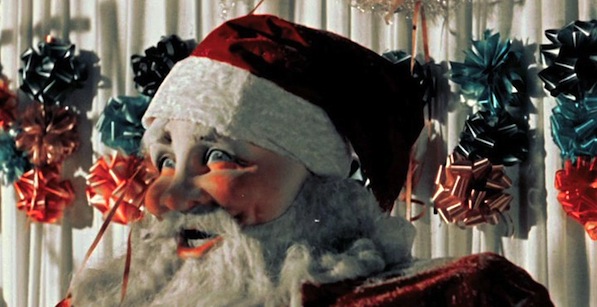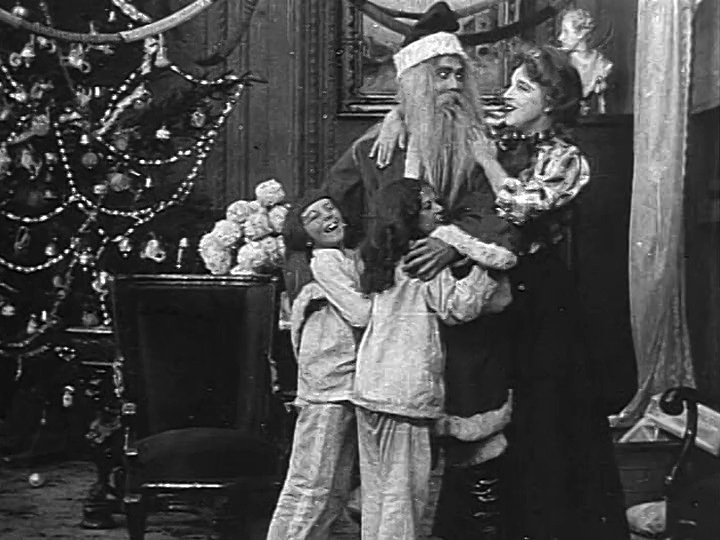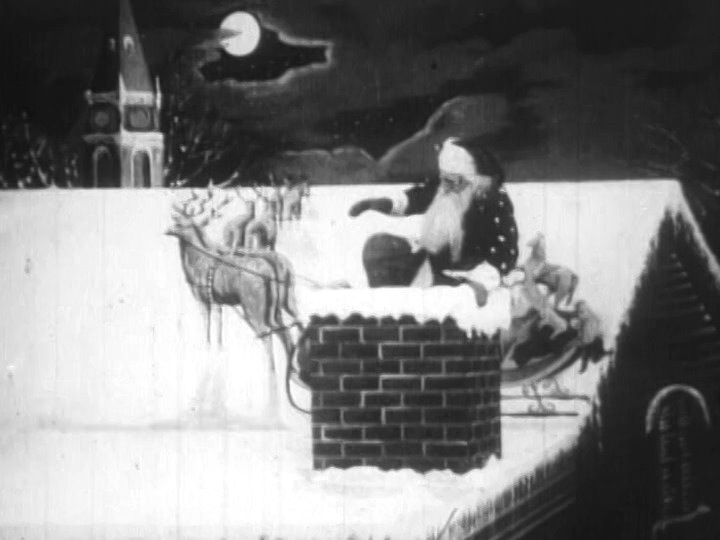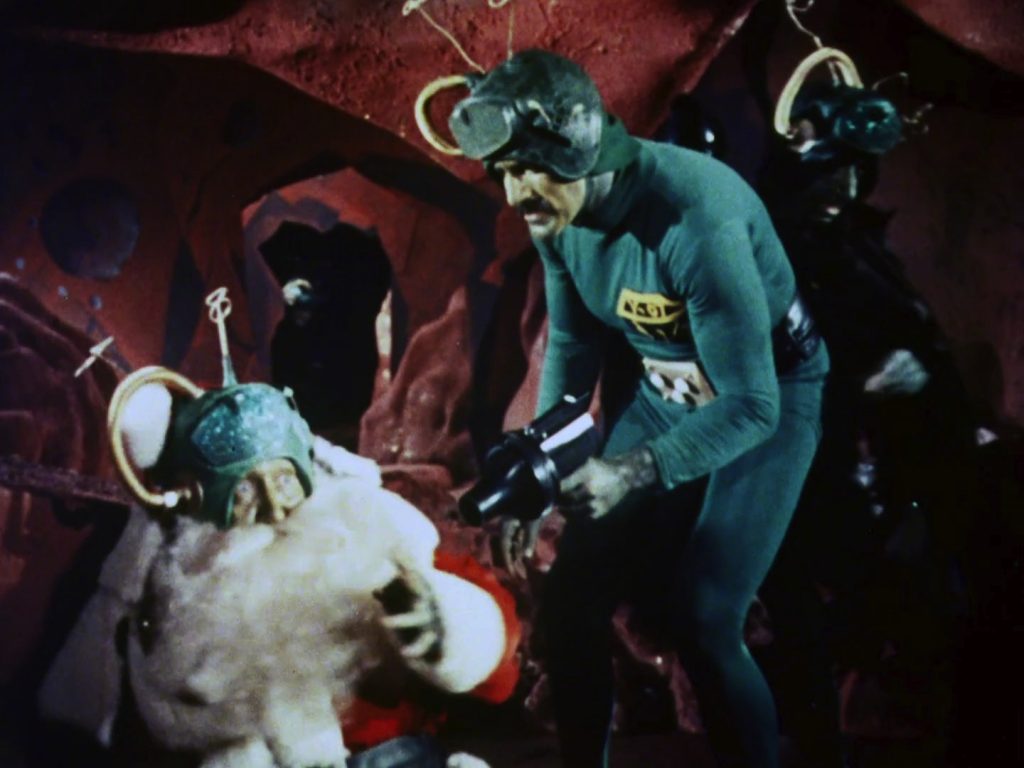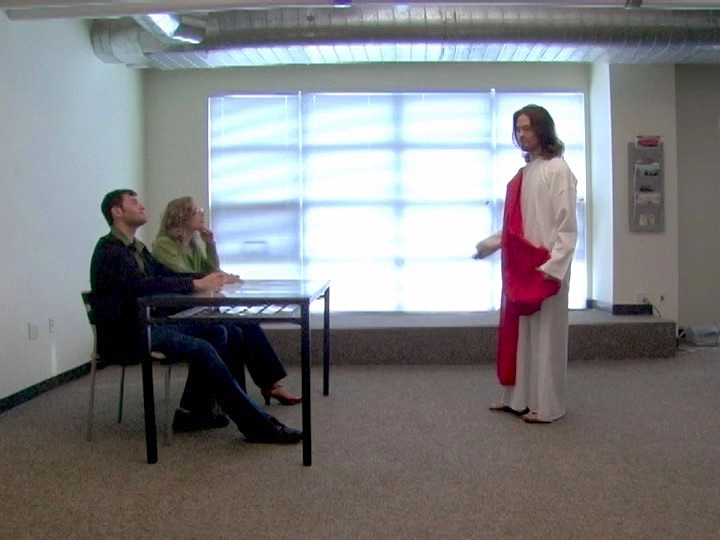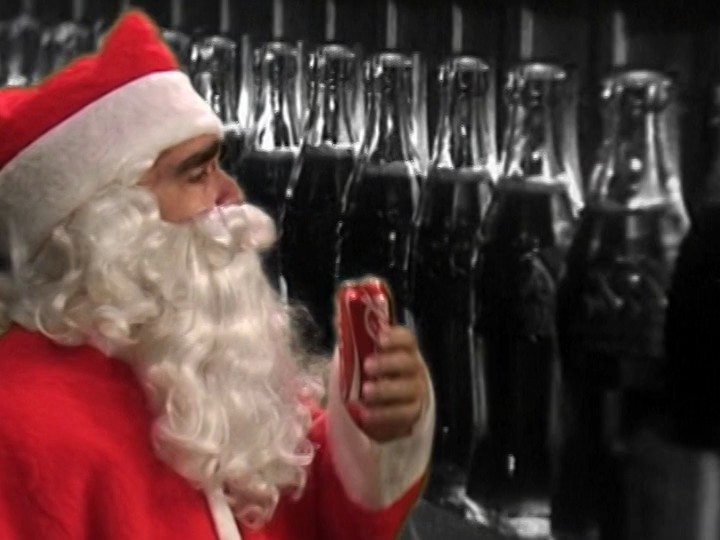He sees you sleep and records your sins. Waits until midnight to enter your home and exchanges gifts for cookies. He’s a selfless saint and the deity of consumer spending. And perhaps the only costume you could don to gather donations and get discount drinks (SantaCon). We’re right to question a character with so many aliases (St. Nick, Father Christmas, Kris Kringle, Santa Claus), but we like what he does for us so much we’ll turn a blind eye to the nefarious consequences he can conjure. He’s a beautiful story to tell kids and a moral conundrum once those who start asking questions. And they will.
A Little Girl Who Did Not Believe in Santa Claus
Edwin Porter saw this coming (or suffered it first hand) and in his short The Little Girl Who Did Not Believe in Santa Claus he makes the kid a charity case. In a torn skirt and holey stockings, she’s by herself until the rich little boy lends her his coat and shuttles her home on his sled. Her grandmother cries over the joys she can’t provide the girl, but the intriguingly wily (and maybe not so “good”) boy will get that girl a Christmas miracle if he has to hold Santa at toy gunpoint. In a class situation that didactic, it seems cruel to toy with the doubts of any child, and the fact relief can only be granted by someone with money (standing up for the needy) is borderline political.
Trap for Santa
When a deserted wife gains a modest fortune from a deceased aunt, her husband accidentally stumbles upon her new home with aim to rob it. He falls into the trap his children made for Santa and since the kids didn’t really understand how or why he left in the first place, his appearance can only be miraculous evidence Father Christmas is more than a bedtime story. D.W. Griffith’s Trap for Santa has its prickly bits of uplift (Griffith can gross a girl out) but judged against other stories of Victorian childhood, his kids are uniquely innocent, naïve and receptive to wonder in a world that, to adult’s eyes, could only defeat them.
The Adventure of the Wrong Santa Claus
Adults are surely defeated in The Adventure of the Wrong Santa Claus and Santa Claus vs. Cupid. Both feature desperate burglars robbing rich men in red suits. The costumed men are luring lady loves by playing Santa to children so their good deeds (and their 11th hour gestures of charity) double as wooing. It’s convenient that desperation ruled the roost—otherwise how could they have impressed their ladies? When kids are betting on a guy they don’t know is as limited as their parents, desperation is inevitable, and never to be mentioned. Say it out loud and you may as well be de-frocking Kringle.
The Night Before Christmas
There’s something borderline anthropological about Porter’s The Night Before Christmas. A period piece made in 1905 with spare sets features plentiful reindeer and the most irksomely believable Santa. The film oozes nostalgia, as if that alone proves Santa exists. The only thing more convincing than nostalgia is “reality.”
Santa Claus
In 1925, four years after Nanook of the North made Eskimos chic, Frank Kleinschmidt shot a biopic of Santa Claus in Alaska for authenticity. It’s true the reindeer are more rugged, the water “guardians” (tusked walruses) are more imposing and the expanse of white tundra is more the desolate and alluring. The film goes to lengths to cover the rounds: Santa raises the deer, edits his naughty/nice list and chats with a Jack Frost (dressed like Max from Where the Wild Things Are). He also informs the Easter bunny who deserves the prettiest baskets, again asserting his dominion over all holiday merriment.
Santa Claus Conquers the Martians
In the holiday gag-flick Santa Claus Conquers the Martians the leaders of Mars must steal Father Christmas to restore joy and childhood glee to their youth, who mope because they never really got to be kids. The world press puts Santa’s intergalactic kidnapping on every front page (likely omitting mention of the Martian’s hilarious weaponry) and the gang of angry green men return Santa to their planet, so his giggling can inspire rampant laughter from all green children. Sure Santa can cure their alien blahs, but once he realizes the planet aims to keep him he rolls up his sleeves and tries to give them the fastest toy-splosion possible so he can return to earth by Christmas Eve. He’s got so many people to please, thank the Lord he’s a multitasker!
Santa Claus
Rene Cardona’s MexiScope Santa Claus gives you a swift (if geographically inaccurate) depiction of each of the cherished tributes the world’s nations send to help at the North Pole. This oddball “It’s a Small World” tour through Santa’s palatial home/office ends in the pits of hell, where Satan debriefs a minion to stop the spread of Peace on Earth like a reverse Wonderful Life. Mexico has a tradition of storytelling that comfortably accommodates abuelitas and luchadores, often in the same rooms; if Santa is real, how farfetched is Satan? Especially when we can feel his presence all year round and Santa only becomes a figure after Thanksgiving. Plus, red looks great in MexiScope.
I am Jesus Christ
In the musical I Am Jesus Christ, “The Reason for the Season” dons a Santa suit to figure out why the commercially motivated world is so eager to get him out of the picture. When five suit-clad commuters sing he should “get a job,” the new world’s order of operations are pretty clear. His apostle’s despirited song after he toils in a tree-lot job is pretty hilarious, but according to the angels, it’s a no-brainer Jesus’s second coming was a dud. It’s not like his promotions department can keep up with the competition.
Christmas Evil
Sometimes the man in the Red suit can mess with your head. Christmas Evil (aka You Better Watch Out) lives out the story of sexy Christmas Carol “Santa Baby” but instead of being funny, the kid who sees Santa feel up his mom freaks out and never recovers. You’d think he’d reject the whole holiday spiel but instead he’s obsessed: he watches kids from his perch in a ghetto, he manages a toy factory and sleeps in fuzzy reds and white fur. So when employees take advantage, he figures out quick what Santa would do, and can get away with.
Futurist Lunch
In Futurist Lunch, Santa has fully assimilated to modern technologies. He dons his clean, cheap red and white to keep tabs on munitions factories, assembly lines and industrial vats of molten metal. He oversees their working silently, neither correcting nor commenting (he can’t, it’s green screen) but when chugs a coke mid-shift it does seem a snarky comment on who owns whom.
Hadacol Christmas
Through grubby, glorious animation, Hadacol Christmas lends hallucinogenic detail to the story of Santa inventing Christmas (codeine was involved). No mention of Kringle’s perma-frosty home is made; instead narrator Califone reports our Santa was chronically ill. To ease his cold symptoms he took non-prescription Hadacol and, like a Rarebit Fiend, the stuff made him dream up the future. A crow enters his home disguised as a woman, and fills it with dead birds he resurrects like Pope Nicholas’ dismembered boys. Inspired, he pushes his sled to catch the wind and flies so high over the world he sees the wires that hold up the moon. The city’s children wake to gifts and declare the holiday as enchantment, for once, overwhelms the heavy smell of coal and exhaust—it’s a gross world but even amidst the smudgy universe and crinkling paper bag sky, Santa brought magic.
Christmas Comes But Once a Year
A patrician inventor hears the cries from the orphanage and ransacks their pantry for resources to transform pots and pans into playthings. You’ve seen this before, perhaps when it played on a loop. It’s a Dave Fleischer animation from 1936 called Christmas Comes But Once a Year, and it suggests anyone can be Santa. That suit’s just a sign and “Santa” isn’t a thing you are, it’s a thing you do.

